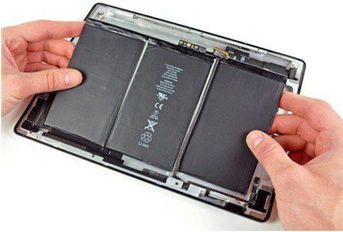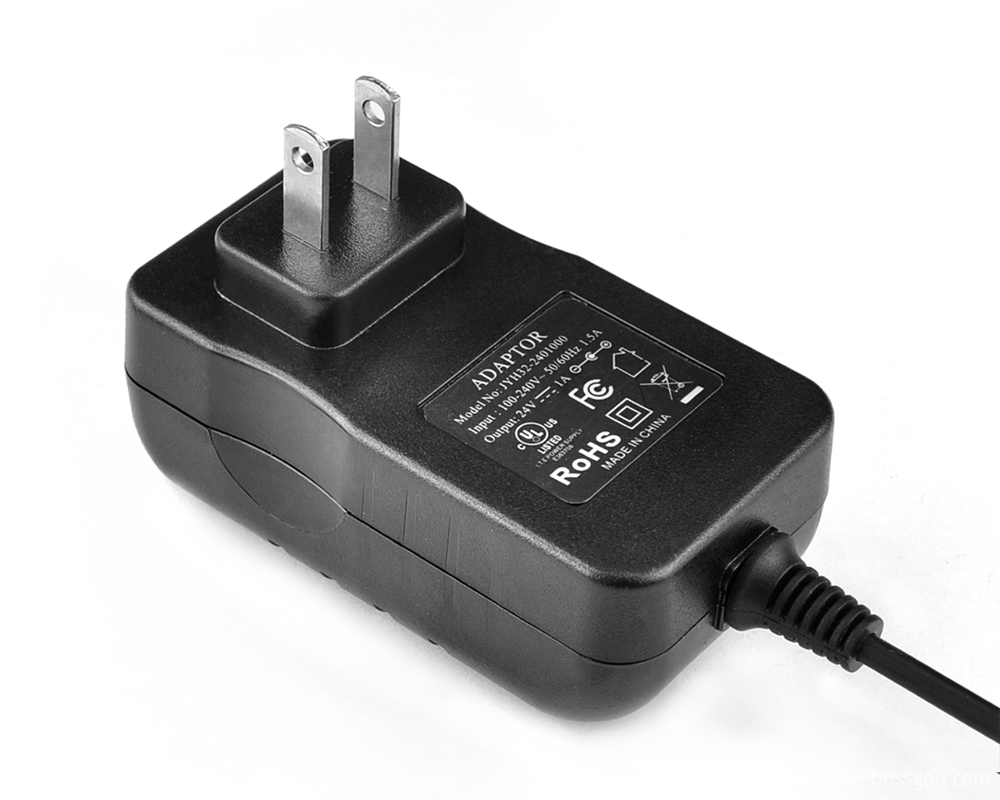48V Plug in AC/DC Switching Power Supply were widely used
for any small power device, such as CCTV Cameras, wireless routers, LED strip,
ADSL cats, HUB, switches, security cameras, audio/video power supply. For 48V
wall mount power supply, the maximum output current is 0.75A,total 36W output.
Our power adaptor meets different certificates for different countries` request
– like UL list/CCC-CQC/ PES/SAA/C-TICK/CB/GB certificate. All our switching
power supplies were getting 100% full-load burning test for at least 2 hours,
and 3000Vac withstanding voltage test for 1 minutes.
48V AC DC Switching Power Adapter 48V AC DC Switching Power Adapter,48V Switching Power Adapter,AC Switching Power Adapter,DC Switching Power Adapter Shenzhen Juyuanhai Electronic Co., Ltd. , https://www.powersupplycn.com In the process of Apple's "going to Samsung," although Samsung's once-occupied 40% share of Apple's parts supply will have a sharp downturn from Apple, the vacant production capacity will be given to other companies such as LCD panels, memory, and even batteries. Manufacturers bring hope. The latest news is that Samsung SDI, the major battery cell supplier of iPad and Macbook products, will also withdraw from Apple's product line. The vacancies provided by SDI will mainly be transferred to the Chinese mainland company Dongguan New Energy (ATL) and Tianjin Lishen.
In the process of Apple's "going to Samsung," although Samsung's once-occupied 40% share of Apple's parts supply will have a sharp downturn from Apple, the vacant production capacity will be given to other companies such as LCD panels, memory, and even batteries. Manufacturers bring hope. The latest news is that Samsung SDI, the major battery cell supplier of iPad and Macbook products, will also withdraw from Apple's product line. The vacancies provided by SDI will mainly be transferred to the Chinese mainland company Dongguan New Energy (ATL) and Tianjin Lishen.
However, based on Samsung’s leading position and strong technical support, according to Gu Wenjun, chief analyst of HI Sisuppli China, Apple’s “going to Samsung†needs a process, and the major players in the industry chain are Japan, South Korea and Taiwan. The manufacturers, because of the technical threshold, Chinese manufacturers can not get much.
On the other hand, for many companies that are eager to split their profits from the Apple industry chain, it may be “come out of favorâ€: the high threshold and low profit are the common awkwardness faced by Apple suppliers. For example, according to research reports on Apple's profits by Huatai United Securities, Apple Company took 58.5% of its profits for each iPhone, while Korean, Japanese and other countries’ suppliers only accounted for about 10% of its profits, and China’s labor costs. Only 1.8%; in the iPad's profit distribution, the profits of Chinese companies accounted for only 2%.
Samsung SDI out
In addition to Samsung lithium batteries, at present, the battery used in Apple products mainly include Sony lithium batteries and LGC, ATL, Lishen several manufacturers of lithium batteries. Among them, ATL and Li Shen are currently the largest apple battery suppliers in China.
According to media reports, when Apple negotiated a new cooperation memorandum with Samsung, the condition for Samsung SDI was increasingly stringent. This is the reason why SDI has not signed a cooperation agreement.
This reason has not yet been confirmed, but it is certain that other manufacturers in the apple battery supply chain will benefit from the vacant production capacity.
Apple's battery supply chain is divided into battery cells and battery modules. Battery cell manufacturers include Japanese Sony, which mainly supplies iPhones. Koreans mainly include Samsung SDI, LG Chem, and mainland China has ATL, Tianjin Lishen, etc. ; And Taiwan's two major battery module factory Xinpu, Shunda is responsible for the production of iPad, Macbook battery module, has not yet stepped into the iPhone battery module.
IEL Materials Research analyst Lu Xuelong analyzed that if Samsung SDI completely withdraws, ATL and Tianjin Lishen will share the supply of pies from Samsung, and Korean Lekin Chemical will also receive a small amount of orders.
Apple is also interested in reducing its dependence on Samsung on other components besides batteries. In the process, more competitors begin to share Apple with Samsung.
In addition to Samsung, Apple’s first iPhone 5 memory suppliers have transferred orders to Hynix Semiconductor, Toshiba and Elpida.
U.S. investment agency Berstein reported that Apple's memory orders will only contribute 2.5% to Samsung Electronics’ profit contribution this year.
In addition to memory, Japan Sharp, Japan Display Inc, and Korea's Lucky Gold Display (LGD) have mass-produced the Apple iPhone 5 LCD panel. Some of the iPad mini's panel orders were also distributed to LGD, Sharp, and AUO from Taiwan.
Although these new finalists are the lucky ones who choose one hundred miles, they will also face all kinds of challenges in the face of the high apple.
For example, Sharp last year became Apple's third-largest supplier in the procurement battle for iPad panels. However, because its IGZO technology did not pass Apple's test on some of its core technical parameters, Apple cut its first batch of panel orders from 1 million. Almost zero, which is also an important reason for Sharp's huge loss in fiscal 2011 and the first quarter of the new fiscal year.
Zhang Bing, Marketing Director of Display Search in China, told the “First Financial Daily†reporter that Apple’s technical evaluation of panel suppliers is very strict. Even if they are qualified, due to Apple’s high technical standards, even Samsung’s in the small and medium size. Some of the panel's core parameters are also unable to meet Apple's requirements. Therefore, Sharp and AUO have taken some risks from the idea of ​​using Apple to turn losses into losses.
Zhang Bing said: "For domestic panel makers, due to technical barriers, it is still too early to win orders from Apple."
Although it is difficult to meet the technical parameters required by Apple products, BOE and Huaxing Optoelectronics have begun to lay out new technologies such as metal oxides, and they also hope to join the battle for orders for Apple's panel.
Sluggish suppliers
While Apple frequently throws the Hydrangea in the mainstream of Android camps such as Motorola and HTC, the patent war between Apple and Samsung continues to escalate. Samsung insisted on the unreconciled and tough attitude of Apple as it used to be in the old days. This kind of toughness relies on the fact that Strong market momentum.
Samsung's market capitalization is equivalent to four times the market value of the five Japanese companies (S$43.7 billion), including Sony, Hitachi, Toshiba, Sharp, and NEC. Research institute IDC data also showed that Samsung has surpassed Apple in the second quarter of this year according to the total volume of shipments of notebooks, tablets, and smart phones. Apple is already reducing the amount of Samsung’s purchases of key components such as panels, flash memory, and processors.
Although Apple hopes that the key components will be produced by other foundries, due to Samsung's strong competitiveness, other manufacturers are still difficult to match, Apple can not completely get rid of Samsung's dependence in the short term.
For example, TSMC, which received a lot of orders for the iPhone 5 chip, lost to Samsung on the A6 processor. A related person told reporters that TSMC’s manufacturing process was not yet in place and that it was unable to manufacture the A6 processor. Apple continued to hand over the A6 processor to its largest competitor.
TSMC will wait until the latest 20-nanometer process technology goes live before it can officially take over Apple's processor orders. Of course, Intel, which has advanced process technology in the future, will also be one of the competitors in Apple's OEM production.
Even if it is a brutal competition, it still deserves a game. However, taking orders from Apple is more of a halo effect. It is an affirmation of quality and technology and does not mean that it will make money immediately.
"In fact, Samsung's suppliers have higher profits than Apple's (suppliers)." Gu Wenjun told reporters that Apple's requirements are very large, after the mainland manufacturers generally reach a certain scale, they hope to reduce costs and expand profits, but the cost Lowered again affects quality. Therefore, most suppliers do not order Apple's orders to make money, but to use Apple to attract more high-quality customer orders.
Immediately after the release of the iPhone 5, technology analysts such as HISiSuppli, UBMTechInsights and others quickly announced cost analysis reports. According to statistics, the cost of the $649 iPhone 5 16G is $207, the price of the $749 32G is $217, and the price of the $849 64G is $238. In other words, there is not much room for profit from suppliers.
In the part of Chinese suppliers participating, the battery cost of the iPhone 5 is only 3 US dollars; and as an accessory headset, the purchase cost price does not exceed 10 US dollars. As for the assembly process of mobile phones, the production manpower cost per cell phone is only 8 US dollars.
Taking the 1400mAh battery of the Apple iPhone as an example, the price is only 5.8 US dollars, but in the market to replace a battery, Apple's asking price is at least 150 US dollars. 